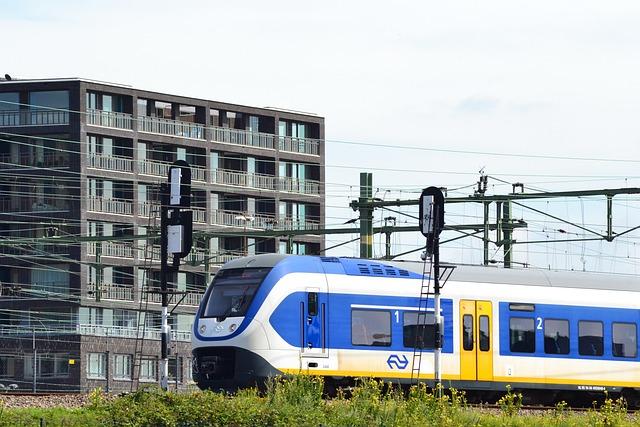A groundbreaking study published on ScienceDirect.com sheds new light on what truly separates elite male sprinters from their competition in the 100-meter dash. By closely analyzing the interplay between maximum velocity and relative acceleration, researchers have uncovered critical insights into the biomechanics behind world-class sprinting performances. This fresh perspective not only deepens our understanding of speed development but also promises to influence training methodologies for athletes striving to shave precious milliseconds off their times. As the quest for sprinting supremacy continues, this research marks a pivotal step in decoding the secrets of the fastest men on the planet.
Profiling Elite Male 100 Meter Sprint Performance Focuses on Maximum Velocity Impact
Recent analyses highlight that maximum velocity stands as the paramount factor influencing elite male 100-meter sprint outcomes. By dissecting split times and biomechanical parameters, researchers have demonstrated that sprinters achieving higher peak speeds tend to outperform their peers more significantly than those who rely predominantly on initial acceleration phases. This discovery emphasizes the critical window beyond 40 meters, where athletes must sustain and optimize their top-end speed to secure podium finishes. Moreover, the interplay between a runner’s ability to reach high velocity quickly and their capacity to maintain it introduces new training targets focused on speed endurance and neuromuscular efficiency.
Complementing maximum velocity, relative acceleration – the rate at which speed increases relative to each athlete’s initial sprint phase – also emerges as a vital performance metric. Unlike absolute acceleration, relative acceleration sheds light on how well elite sprinters transition from their start into maximum speed. The study categorizes key performance indicators into the following:
- Initial acceleration phase: Foot contact time and stride length consistency
- Transition phase: Smoothness in speed increment and biomechanical efficiency
- Maximum velocity phase: Maintenance of stride frequency and ground contact minimization
| Performance Metric | Impact on 100m Time | Training Focus |
|---|---|---|
| Maximum Velocity | Highest correlation with final sprint time | Speed endurance & neuromuscular power |
| Relative Acceleration | Moderate correlation; key for smooth speed transition | Explosive start & technique optimization |
| Initial Acceleration | Foundational but less predictive for elite level | Reaction time & block clearance drills |
Insights into Relative Acceleration as a Key Factor in Sprint Success
Elite male sprinters demonstrate that the ability to rapidly increase speed during the initial phase of the 100-m sprint significantly influences overall performance. Unlike pure top-end speed, which has traditionally been emphasized, recent analysis reveals that relative acceleration-the change in velocity relative to an athlete’s current speed-is a critical determinant of race outcome. This means athletes who can sustain aggressive acceleration while transitioning to their maximum velocity tend to gain a decisive edge over competitors, optimizing their position before reaching peak speed. Research shows that managing this acceleration effectively reduces deceleration phases, preserving optimal velocity for longer distances.
Key elements that define successful relative acceleration include:
- Stride frequency and length optimization: Tweaking these factors allows sprinters to maximize force output.
- Neuromuscular coordination: Enhances rapid force development crucial for accelerating phases.
- Energy system efficiency: Efficient use of anaerobic energy supports powerful bursts without premature fatigue.
A comparative table below highlights how top sprinters maintain superior relative acceleration during the first 30 meters compared to sub-elite runners:
| Group | Average Relative Acceleration (m/s²) | Time to 30 m (s) |
|---|---|---|
| Elite Sprinters | 5.8 | 3.70 |
| Sub-Elite Sprinters | 4.3 | 3.95 |
Experts Recommend Targeted Training to Enhance Speed and Acceleration Metrics
Elite sprint coaches emphasize the necessity of targeted training regimens that hone both speed and acceleration to optimize 100-m performance. Scientific analyses reveal that maximal velocity alone does not guarantee victory; rather, the capacity to rapidly reach near-top speeds is equally vital. To elevate these critical components, specialists recommend incorporating exercises designed to improve explosive power, reaction time, and neuromuscular coordination.
Key training elements highlighted by experts include:
- Resisted sprints: Enhance force application during the initial acceleration phase.
- Overspeed drills: Facilitate adaptation to speeds beyond an athlete’s typical maximum.
- Plyometric workouts: Develop muscular elasticity and power for quicker ground contact times.
- Technique refinement: Focus on optimized stride mechanics and posture to sustain efficiency at top speed.
| Training Component | Primary Benefit |
|---|---|
| Resisted Sprints | Improved initial drive |
| Overspeed Drills | Enhanced top-end speed |
| Plyometrics | Explosive power |
| Technique Drills | Running efficiency |
Future Outlook
In conclusion, this comprehensive analysis of elite male 100-meter sprint performance highlights the critical roles of maximum velocity and relative acceleration in distinguishing world-class athletes. By dissecting the intricate balance between explosive starts and top-end speed, the study offers valuable insights for coaches, trainers, and competitors striving to push the boundaries of human speed. As sprinting continues to captivate audiences worldwide, such research not only deepens our understanding of athletic excellence but also paves the way for future innovations in training methodologies and performance optimization.





